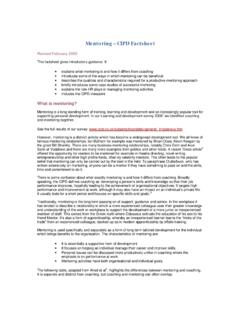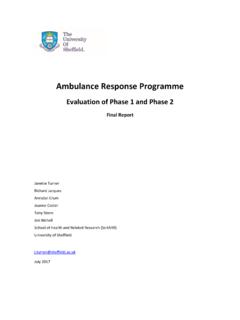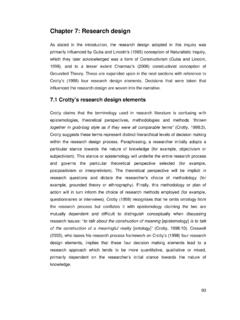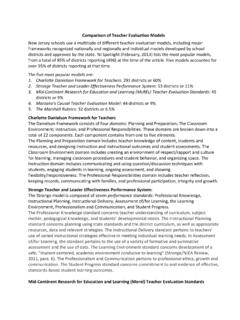Transcription of Marshall Mannwhits - University of Sheffield
1 Community project encouraging academics to share statistics support resources All stcp resources are released under a Creative Commons licence Sofia Maria Karadimitriou and Ellen Marshall Reviewer: Chris Knox Sheffield Hallam University University of Sheffield stcp- Marshall - Mannwhits Mann-Whitney U test (Non-parametric equivalent to independent samples t-test) The Mann-Whitney U test is used to compare whether there is a difference in the dependent variable for two independent groups. It compares whether the distribution of the dependent variable is the same for the two groups and therefore from the same population. The test ranks all of the dependent values lowest value gets a score of one and then uses the sum of the ranks for each group in the calculation of the test statistic.
2 Dependent: Numerical/continuous (skewed) or ordinal Independent: Nominal (binary) Data: Leg Ulcer data This data was collected from a randomised controlled trial on patients with leg ulcers which aimed to compare a new treatment regime in the clinic with usual care at home. One of the variables of interest was the number of weeks patients remained ulcer free (UFW). Research question: Is there a difference between the mean number of ulcer free weeks for the control and intervention groups? Patients are in one of two groups (GROUP = Clinic or home) and the mean difference in ulcer free weeks (UFW) is of interest so an independent t-test is appropriate. However, one of the assumptions of an independent t-test is that the dependent variable needs to approximately normally distributed for both groups. The following resources are associated: Independent samples t-test, Summarising continuous data by group, SPSS dataset Leg Mann-Whitney in SPSS statstutor community project This assumption can be checked with histograms using Graphs Legacy Dialogs Histogram, moving ulcer free weeks (UFW) to the Variable box and Group to the Rows box.
3 The distribution of ulcer free weeks is skewed in each group and the groups are independent of each other, therefore the Mann-Whitney test is appropriate with UFW as the dependent variable and GROUP as the independent variable. Assumptions The only assumptions for carrying out a Mann-Whitney test are that the two groups must be independent and that the dependent variable is ordinal or numerical (continuous). However, in order to report the difference between groups as medians, the shape of the distributions of the dependent variable by group must be similar. It doesn t matter if the distributions have a different location on the x-axis, they just have to be a similar shape. The histograms show that the two distributions have a similar pattern, they are both positively skewed, so the medians can be used to summarise the differences for the ulcer free weeks. If the two histograms looked different, differences in the mean ranks rather than medians would be summarised.
4 Use the Analyze Compare Means Means procedure shown in the Summarising continuous data by group resource to produce the medians by group. The median for the treatment group (Clinic) is considerably bigger than the Home group. Conducting the Mann-Whitney U test in SPSS There are two methods for running a Mann-Whitney test in SPSS; the old Legacy Dialogs method and the new procedure which will be demonstrated here. In order to use the test, it is important that variables are classified as Scale in Variable View. Even if the dependent variable is ordinal it needs to be defined as Scale in Variable View to run the Mann-Whitney test through the new procedure. The independent (grouping) variable should be defined as Nominal. Mann-Whitney in SPSS statstutor community project To run the test, go to Analyze > Nonparametric Tests > Independent Samples and leave the default setting on the Objective tab which is Automatically compare distributions across groups , then select the Fields tab.
5 Clicking on Run will now run the standard Mann-Whitney U test and give the output below. The output clearly states that the distributions are being compared, that the p-value is and that the null hypothesis of equal distributions has been rejected. If you double click on the results in the Output window, a new window with more information on the right hand side opens. The chart shows the distributions of the two groups and also contains the mean ranks for each group. The Clinic group have higher ranks suggesting that they generally have higher values of ulcer free weeks. There are three test statistics in the table (U, W and Z) but the Mann-Whitney U statistic is commonly reported. The Wilcoxon W is simply the lowest sum of ranks but in order to calculate the p-value (Asymp. Sig), SPSS uses an approximation to the standard normal distribution to give the Z statistic and resulting p-value.
6 This is only appropriate for large samples so if the Move the dependent variable to the Test Fields box. Move the independent variable to the Groups box. There is no option for choosing which groups to compare here so if there are three or more groups, a Kruskall-Wallis test will automatically be carried out instead. Mann-Whitney in SPSS statstutor community project sample size is 40 or less, an Exact test is performed automatically and another row appears in the output entitled Exact Sig. [2*(1-tailed Sig.)] which is the p-value that should be used. Here the sample size is large so the Z approximation p-value of should be used. Reporting a Mann-Whitney test A Mann-Whitney U test showed that there was a significant difference (U = 5596, p = ) between the leg ulcer free weeks for the Clinic group compared to the group receiving the standard treatment.
7 The median ulcer free weeks was 20 weeks for the Clinic group compared to weeks for those receiving the standard treatment at home suggesting that the new treatment is more effective. Calculation of effect sizes An effect size can be calculated by dividing the absolute (positive) Standardised test statistic z by the square root of the number of Here the effect size is which is a small effect according to Cohen s classification of effect sizes which is (small effect), (moderate effect) and and above (large effect). comparison of medians There are some alternative tests which are contained in the Settings tab of Analyze > Nonparametric Tests > Independent Samples which can be requested after selecting Customize tests . If the distributions of the dependent variable by group are a similar shape, medians can be compared using the Moods Median test. This test calculates a pooled median from all the data and then uses a Chi-squared test to compare each group s proportions below the pooled median.
8 If the two groups have similar medians, a similar proportion of subjects will be above and below the pooled median.















